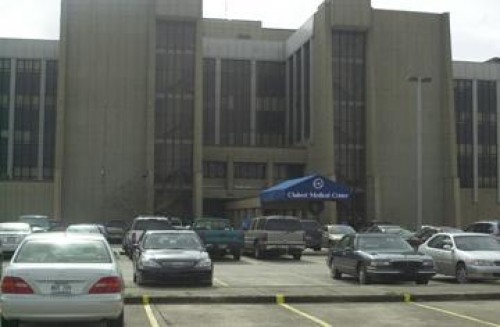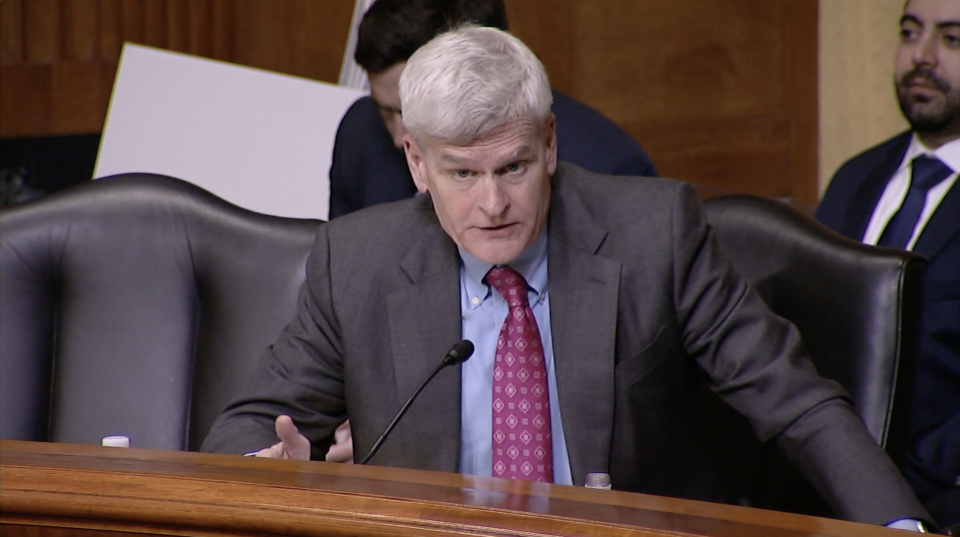Anna Giroir
January 15, 2007Check It Out!
January 17, 2007The Louisiana Department of Health and Hospitals created a redesign collaborative, involving both long-term and short-term initiatives, aimed at improving the overall quality of health care and decreasing the number of uninsured in Louisiana.
“We’ve got it backwards,” said Fred Cerise, secretary of the LDHH, addressing professionals during a public forum at the Leonard J. Chabert Medical Center on last week. “We have high-cost insurance rates and provide the lowest quality of care. The current system doesn’t work.”
Cerise was on the road updating regional facilities and medical staff on prospective changes to the state system. He also met with local legislators to discuss region-specific issues. Tri-parish area hospitals, for instance, are straining to care for an influx of patients with a shortage of available beds.
According to Tony Martinez of the Thibodaux Regional Medical Center’s Marketing and Planning Department, the hospital has its hands full.
“We have been busy post-Katrina. We are seeing more people in the emergency room and had a record number of surgeries in the past year. Both inpatient and outpatient numbers have gone up,” said Martinez.
Even with an additional 30 beds in a newly constructed inpatient wing, Martinez said space is so tight some patients are being diverted or referred to regional outpatient providers.
“This new plan will change the way we look at healthcare and hopefully alleviate many of the problems that (Louisiana) facilities are facing today,” said Cerise.
Fixing the System
The state redesign should ease access to health services and provide a new way of thinking when it comes to implementing services.
Cerise said physicians and other healthcare professionals from around the country created a list of recommendations last year in Baton Rouge during LDHH Blueprint Design Workgroups.
Hurricanes Katrina and Rita made apparent many of the underlying problems concerning the state’s system and Cerise said the workgroups created productive ideas, which led to the current plan.
The main proponents of the redesign strategy include an innovative medical home system of care, a state forum on quality, new health information technology and rethinking coverage of services, Cerise said.
“The medical home system of care is the foundation of the redesign,” he said.
Overly fragmented, the current system creates a series of hoops patients must jump through to seek treatment. Cerise said this process is highly inefficient and not only costs the patient extra money and time going from one referral to the next, but the state is also paying extra.
The new plan will create what Cerise calls a “system-ness” across the spectrum of delivery.
“There are no incentives for physicians to work in collaboration and so what happens is that a patient will go to their primary physician, who then makes a referral to a specialist to run the same tests and the patient may be referred back for treatment,” Cerise said.
By creating incentives, coordinated care would eliminate some of the extra steps, allowing primary physicians to access specialists and make referrals only when necessary, alleviating time and money, he said.
What LDHH is calling the “backbone” of the patient-centered health care system is the revitalization of patient records. The Health Information Technology sector will allow seamless sharing of information between physicians. Cerise said record sharing will eliminate unneeded testing, improve outcomes and accelerate treatment, as well as ensure patient safety.
“With patient records in one accessible system, if they need treatment but are unconscious, the records are available indicating any allergies or other information that may save that person’s life,” said Cerise.
The state’s next step is to create the Louisiana Health Care Quality Forum. Cerise said this group would consist of a separate governmental structure and generate outcomes.
The forum would then take responsibility for implementing and tracking outcomes.
Coverage For All
According to the LDHH, Louisiana has one of the highest rates of uninsured citizens in the country. One factor is the steep price of Medicare coverage. Last year, the cost of life coverage was $60,000, nearly double the national average of $36,000.
To combat the issue of uninsured residents, Cerise said the LDHH is planning to expand statewide and regional coverage to ensure each child, pregnant women or individuals with serious mental illness and addictive disorders receive coverage.
The DHH will also implement an insurance connector, which will help low-income uninsured residents find individual affordable options, he said.
Reasonable healthcare solutions are ample for unemployed residents and residents falling into high-income brackets, but the low-income and middle class residents have limited cost-effective options.
“This will be an administrative entity that will be able to pool resources to make insurance more affordable for that middle group, which is growing,” said Cerise.
A Mental Healthcare Crisis
Before meeting publicly, Cerise sat down with local state legislators to discus another epidemic that faces the Tri-parishes: the lack of mental healthcare.
“We are in a mental health crisis,” Sen. Reggie Dupre explained to Cerise and other legislators. Dupre said Chabert currently maintains 10 open beds for behavioral disorder or psychiatric in-patients.
With the New Orleans charity hospital permanently closed, Chabert is seeing an overwhelming number of patients coming from all over south Louisiana for help.
Once beds designated for mental health patients are filled, the overflow is sent to the emergency room, and hospital director Larry Walker said the lack of room has affected the number of ER beds available for trauma patients.
Again, Cerise is banking on the success of a decentralized system. By making patient information accessible between providers, the need for duplicate services would be eliminated and care could be expedited. Calls for public and private caregivers to work in unison would greatly relieve the burden on state hospitals, which provide the majority of in-patient mental health care in the state, officials agreed.
“We are trying to get things better aligned… now with a human services district coming online it makes great sense to align those in and out patient service. We haven’t done a good job because the system is so fragmented,” said Cerise.
Andrea Carlson can be reached at andrea@tri-parishtimes.com.
Staff photo by MATT LeBLANC • Tri-Parish Times * On the heels of the 2005 hurricane season, lawmakers adopted a state-wide building code intended to protect homeowners. The extensive code calls for new construction to be able to withstand Category 3 storms at a minimum, and places restrictions on contractors among a number of other changes. But the real end result in the Tri-parishes has been skyrocketing building costs and a slow-grinding permit process, leaving many to wonder if the new law isn’t squeezing many would-be homebuyers out of the market.












